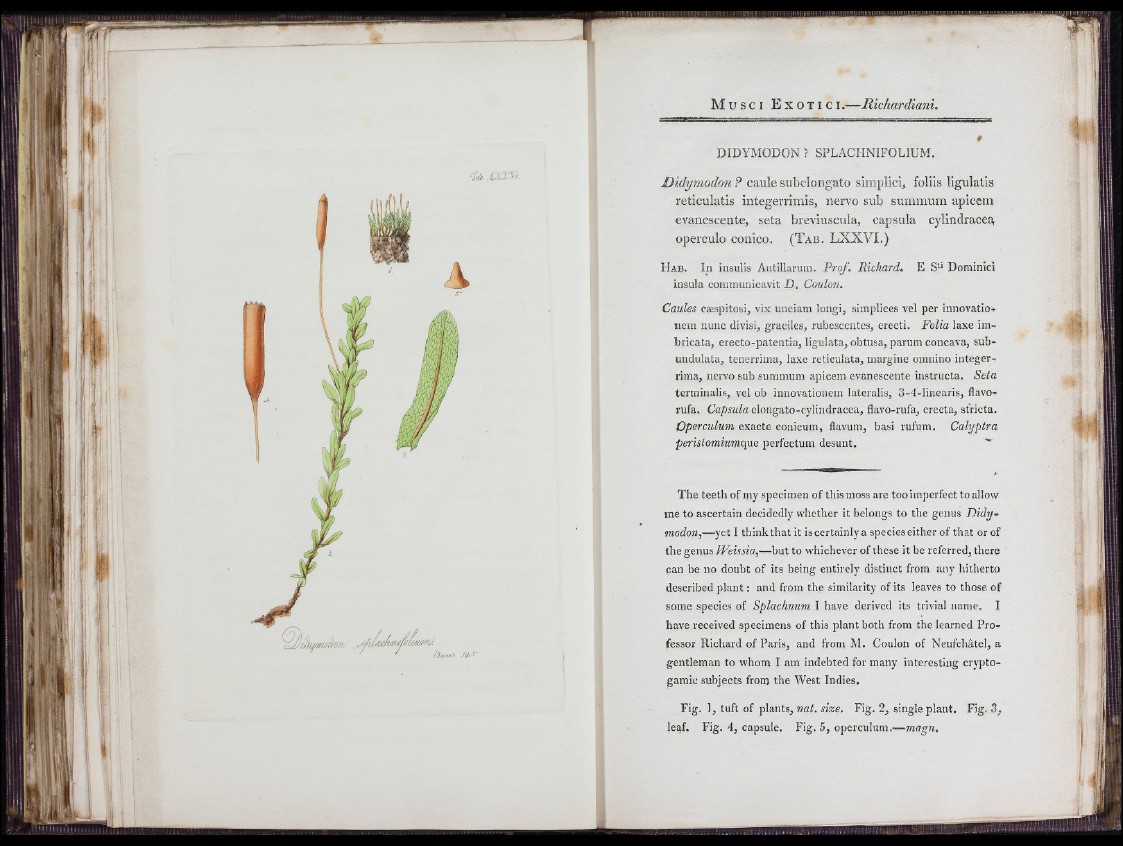
w ”
A
DIDYMODON ? SPLACHNIFOLIUM.
Didymodon P caule subelongato simplici, foliis ligulalis
reticulatis integerrimis, nervo sub summum apicem
evanescente, seta breviuscula, capsula cylindracea,
operculo conico. ( T a b . LXXVI.)
H a b . I_n insulis Antillariim. Prof. Richard, E S*-* Dominici
insula communicavit D , Couhn.
Caules cæspitosi, vix unciam longi, simplices vel per innovatio*
liera nunc divisi, graciles, rubescentes, erecti. Polia laxe imbricata,
erecto-patentia, ligulata, obtusa, parum concava, sub-
uiidulata, tenerrima, laxe reticulata, margine omnino integerrima,
nervo sub summum apicem evanescente instructa. Seia
terminalis, vel ob innovationem lateralis, 3-4-linearis, flavo-
rufa, Capsula elongato-cylindracea, flavo-rufa, erecta, sfricta.
Operculum exacte conicum, flavum, basi rufum. Calyptra
peristomiumop-e perfectum desunt, ^
The teeth of my specimen of this moss are too imperfect to allow
me to ascertain decidedly whether it belongs to the genus D id y modon,—
yet I think that it is certainly a species either of that or of
the genus Weissia,—but to vvhichever of these it be referred, there
can be no doubt of its being entirely distinct from any hitherto
described plant : and from the similarity of its leaves to those of
some species of Splachnum I have derived its trivial name. I
have received specimens of this plant both from the learned Professor
Richard of Paris, and from M. Coulon of Neufchâtel, a
gentleman to whom I am indebted for many interesting cryptogamie
subjects from the West Indies.
Fig. 1, tuft of plants, nat. size. Fig. 2, single plant. Fig, 3,
leaf. Fig. 4, capsule. Fig. 5, operculum.—magn.
II